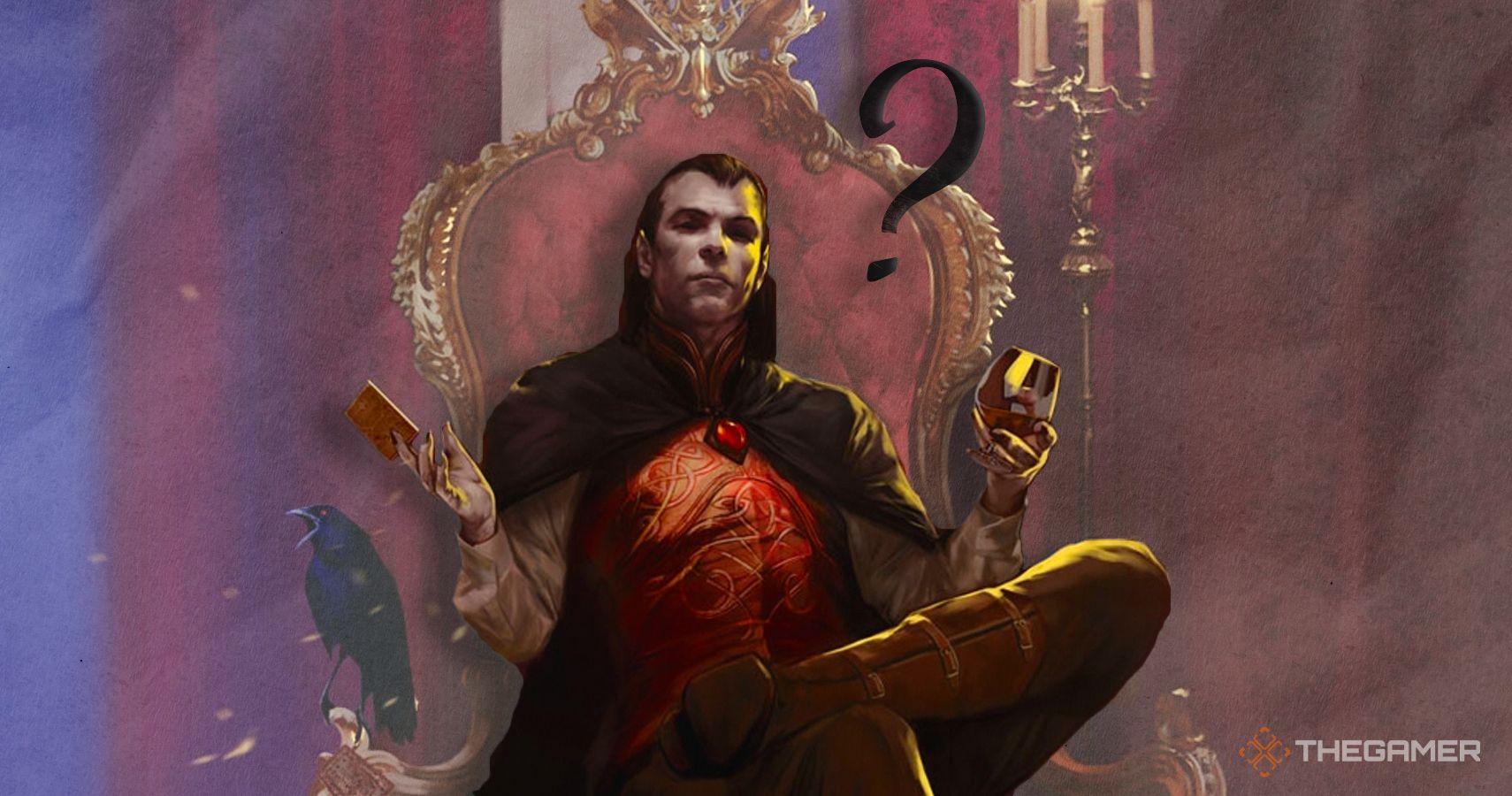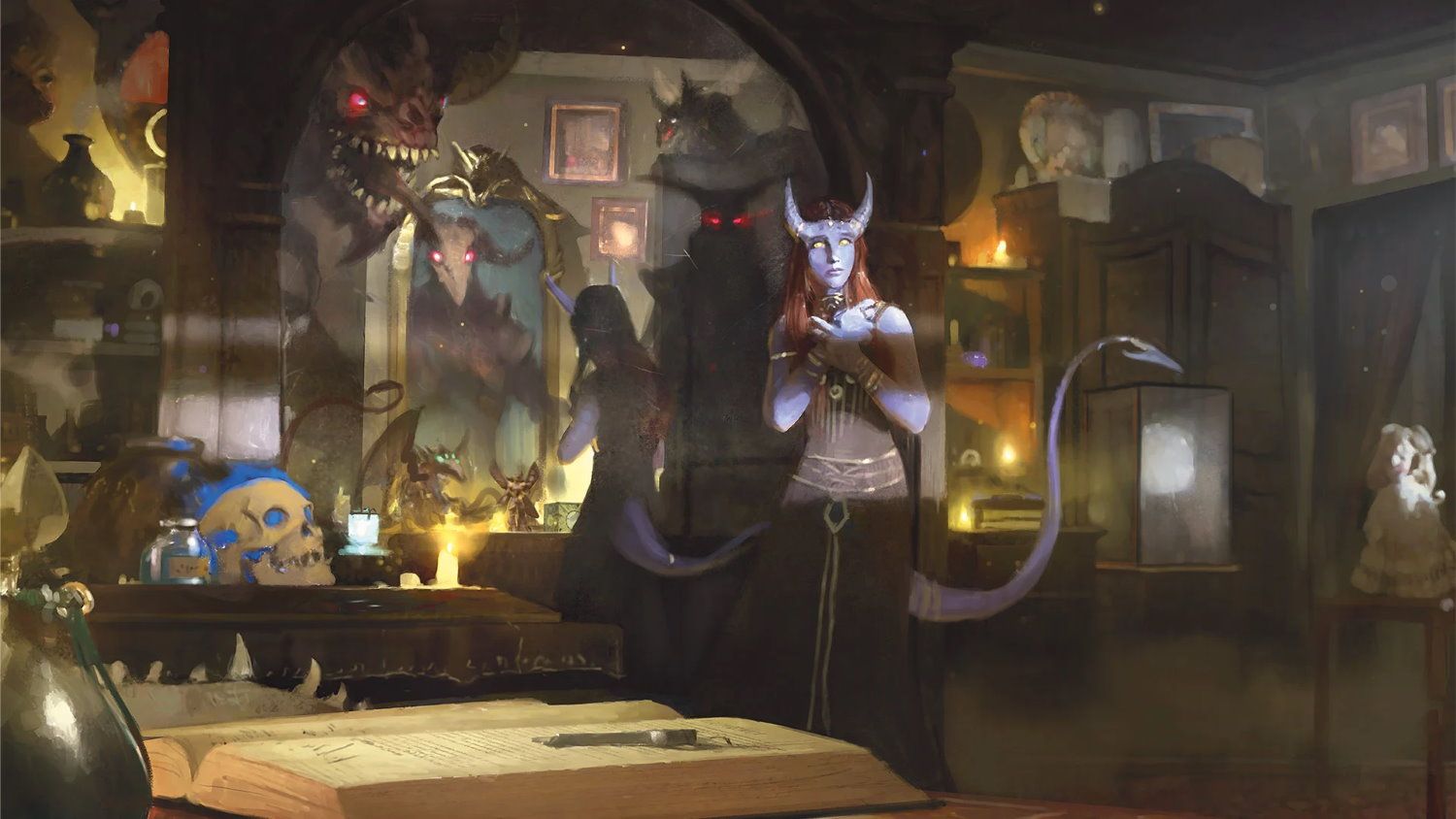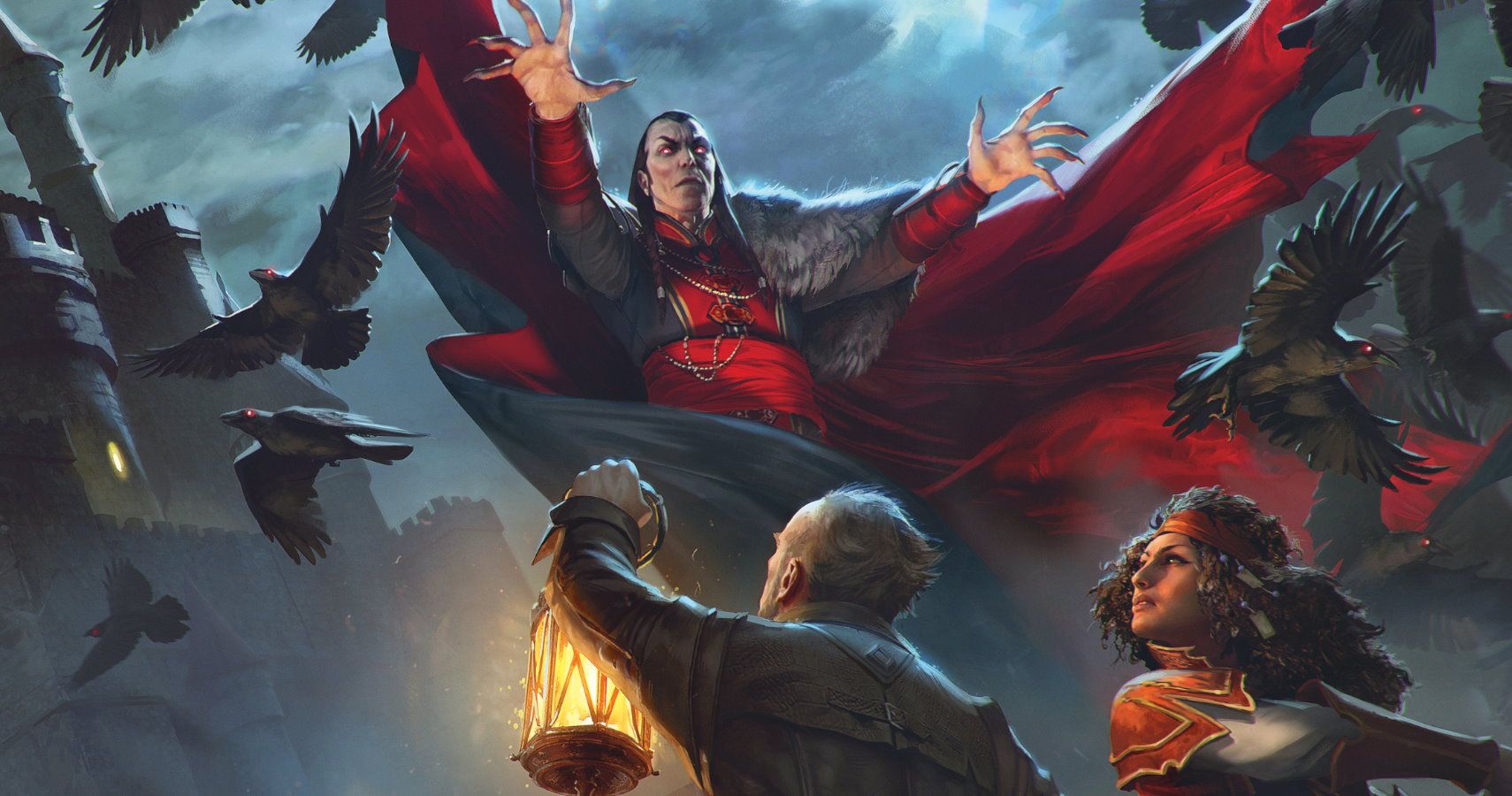A new Dungeons & Dragons book is coming out next week, and it's already getting some negative fan feedback. Some might wonder how that's possible, as the average D&D player hasn't had a chance to even read the thing, but many influencers are currently sharing their preview copies. It was thanks to these previews that we discovered Van Richten's Guide to Ravenloft doesn't give unique stats to its big bads.
Instead, you 'll find a recommendation to use generic monster stats for Darklords, the masters of Ravenloft's nightmare domains. That does seem like a huge oversight at first - when a group reaches the culmination of their adventures, they tend to expect a climactic battle against a powerful foe. Going by pure stats, however, many Darklords are only as strong as a simple human spy. Killing a weakling like that in one turn is not an epic end to your standard D&D adventure. But that's exactly the point. Ravenloft is not the place for your standard D&D adventure.
In theory, D&D is a flexible set of rules that allow creative Dungeon Masters freedom to tell all sorts of stories. In practice, the vast majority of players come to D&D expecting medieval fantasy that makes them feel like heroes. That makes it hard to switch to other genres, especially something like horror where the main characters are up against an unstoppable force. D&D 5E is built around powerful player characters and grid-based combat, yet a horror campaign often requires players to feel helpless as the villain slowly moves in for the kill.
This seeming incompatibility is exactly why Van Richten's exists. Its writers put a lot of thought into defining the different types of horror and giving examples of how they can be used in a D&D campaign. These themes are most explored in the chapter dedicated to the Domains of Dread, the themed lands over which Darklords rule. Break downs of each domain give both an easily understood "hallmark" (think political intrigue, alien abductions, or zombies), but also go more in detail as to how horror elements manifest in an actual gameplay session. Characters might find cryptic letters constantly appearing in their belongings, the deliverer always going unseen. Or they might wind up trapped in a post-apocalypse plagued by monthly zombie attacks, with no obvious necromancer to beat up and stop it all.
The vague nature of the threat is key. Many horror movie monsters are unstoppable in a head-on fight, and even classic spooks like vampires only have very specific weaknesses. The Darklords of Ravenloft are based on these iconic baddies, so they too aren't meant to be dealt with in a single boss battle. Rather, the true terror tends to be their layered schemes, armies of minions, or the way they can reshape the very world itself to keep the heroes trapped in an eternal nightmare.
Once you recognize that Darklords work in a different way than the standard D&D boss, it's easy to see why an HP-heavy statblock with Legendary Actions doesn't really serve them. Their ability to lockdown their domain, spread a plague, or manipulate dreams isn't something you can quantify with numbers. Instead, a Darklord's powers are something to be deployed over the course of many sessions, making the players wonder when and if they'll ever get a chance to face their foe. As the book puts it "dread isn't a factor of challenge rating or character level, but of the suspense your adventures create."
That's what it all comes down to - and it's an important lesson for any DM to keep in mind. D&D can be so much more than combat, and Ravenloft adventures demand more. Not that a combat-heavy dungeon crawl can't be fun, but that's a different setting. The Darklords of Ravenloft do battle by turning allies into enemies, depriving heroes of sleep with nightly haunts, and dangling hope just to yank it away at the last moment. Thankfully, Van Richten's does give descriptions of how these manipulations work, and how a tense story can be spun out of these more open-ended threats.
When players finally defeat a Darklord, it will be because they persevered and were resourceful in unraveling their enemy's many schemes. It should feel like a different kind of victory than if they just got a lucky crit or rendered the boss powerless with stunning strikes. Thinking beyond the statblocks and making use of Van Richten's horror themes will make your Ravenloft adventures (and maybe all your adventures) more engaging.



